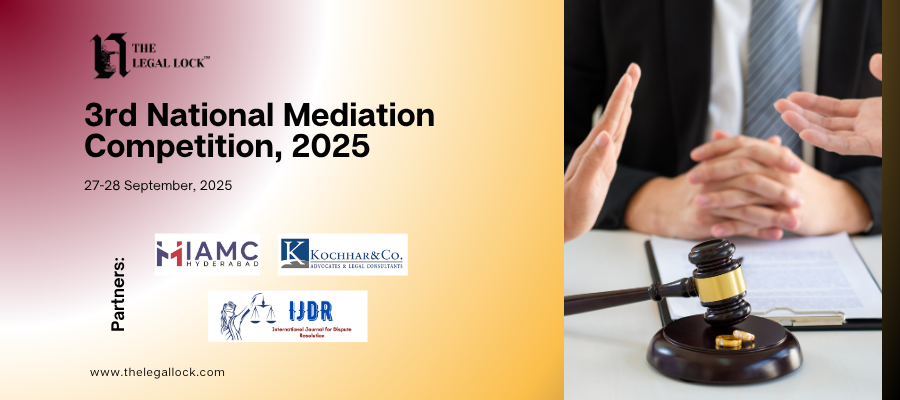Security of Courts: Problems, Government and Justice!

Introduction
Court security encompasses a wide range of issues. From providing physical protection to judges to education, from court violence to data integrity to architecture.
Policy and procedures, physical security (including equipment and architecture), and personnel are all covered in terms of court security. Additionally, the issue of security includes the link between security and the criminal justice system, risks to court procedures, counter-threat methods; and accountability for court security.
Deterrence, identification, and damage reduction are all aspects of courthouse security. The primary goal of effective security design is to discourage possible threats to the safety of people and facilities within the courthouse.
The more successful the deterrent, the fewer security issues will arise. Finally, security design aims to restrict the amount of harm that may be produced by actions taken in response to a threat. Damage limitation is exemplified by a building that has had a bomb put in it and has been evacuated quickly, safely, and orderly without any prisoners escaping.
Incidents of violence in courts
The Rohini District Court in Delhi rattled and resonated with panicked shouts and a sequence of loud gunshots on the tragic day of September 24, 2021.
The echoes of gunshots had not yet cleared, and on October 18, 2021, an Advocate, Bhupendra Singh was shot down at Shahjahanpur District Court, (U.P.), by an unknown assailant, causing extreme havoc in the court complex.
Another attorney called Nishant Pilwan was shot and killed in Noida on the 26th of October 2021Another incident of violence in court was when a Bar Association employee was discovered dead inside an advocate’s chamber at Tis Hazari Court complex.
The Supreme Court said that the murder of Dhanbad Additional Sessions Judge Uttam Anand in an alleged hit-and-run incident has “bigger consequences,” taking suo moto cognizance of the “gruesome tragedy.”
The court stated that it will examine broader security concerns for justices across the country. Chief Justice N V Ramana and Justice Surya Kant of the Jharkhand High Court ordered the Chief Secretary and Director General of Police (DGP) to jointly submit a report on the progress of the inquiry into the event within a week.
These incidents show that how the security of courts has been compromised or undergone several difficulties which as a result cause damage, loss of life, escape of prisoners, or otherwise.
Further analysis of the data reveals that there have been over 125 deaths and 250 persons injured as a result of similar attacks. Most attacks on or around the Court buildings have occurred in Uttar Pradesh and Delhi.
While there have only been a few attacks on High Courts, numerous district courts across India have been severely harmed. The seriousness of the problem is considerably heightened by the fact that similar instances have become so common, creating a very dangerous precedent.
Ensure security in courts: Delhi HC
The Delhi High Court has ordered that all individuals entering court complexes in the national capital be vetted by security officers, as well as round-the-clock CCTV surveillance of court buildings.
The ruling was issued on November 24, a day after a low-intensity explosion occurred at Rohini district court. Frisking will take place at two checkpoints, according to a division bench led by Chief Justice D N Patel and Justice Jyoti Singh, namely the access gates of the court complexes and the entry points to the buildings containing the courtrooms.
The bench noted in the ruling that women police personnel will be placed at entry points to inspect lady attorneys, workers, and litigants. The court also ordered the Delhi Police to deploy the most up-to-date metal detecting and luggage screening technologies. It said that “no luggage should be let within the court premises without being scanned.”
It also directed the Delhi Commissioner of Police to form a team of specialists to conduct a security evaluation of the Delhi High Court complex as well as all of the city’s district court complexes. The court further ordered that all cars entering the court facilities be thoroughly inspected, with only authorized vehicles with stickers being allowed.
Automated gates, such as those seen at Metro stations, should be examined to deal with the massive footfall in the courts. Advocates must cooperate fully with security personnel. At the time of screening, frisking, and luggage scanning, attorneys must cooperate fully with security officers, the court stated.
Problems in court security
The police are one of the most common attendees at court hearings; they come to the courtroom every day to witness criminal, civil, juvenile, and family court processes, and they may or may not be armed.
Lawyers, as officials of the court, became the most enraged and outspoken in claiming their traditional right to bypass security. It was urged during the Dwarka court’s security review conference that lawyers’ assistance for checking be secured.
Lawyers do not allow checking of their chambers in any district court. Weapons and booze are simply smuggled in, according to authority.
Court security is costly; it necessitates the purchase of capital equipment for screening persons and luggage, as well as the wages and benefits of judicial security employees and the layout of existing court facilities.
Court security has a direct impact on court finances. Many people arrive when the court opens, as instructed, and wait as long as it takes for their case to be called. A security issue arises when a large number of people are present in or around a courtroom.
Yelling, singing, hissing, standing, and shouting are all common in or around the courtroom. These disturb the orderly flow of cases and have an impact on security issues. In the context of actual or perceived hazards, tension may arise in any big group, especially a disorderly one.
Tension can be lessened by using a sufficient number of court officials trained in crowd control, equipped with suitable weapons and communications, and placed around the courtroom.
Court security necessitates comprehensive preparation for how to respond to events without causing panic, how to communicate with decision-makers and staff, what technologies are required to secure system-wide communications, and how to ensure the orderly evacuation of facilities.
Ways to ensure court security
It is important to evaluate the physical security within the courthouse and in the immediate surrounding area with the help of the high-profile team, and plan appropriately considering the courtroom’s size and location.
There should be large enough to handle the number of participants and security workers, but not so big that spectators might cause problems. Screening everyone who enters the courtroom is a common procedure that serves to protect everyone’s safety while using the court’s facilities.
It is to examine if any additions or improvements to the courthouse or the surrounding area are required for adequate physical security. Ensuring emergency evacuation plans in the event of increased traffic to the court is necessary.
Create a strategy for dealing with possible drone security issues. Developing a working connection with law enforcement agencies and staff who have control over the courthouses outside and neighbouring regions is needed. Additionally, it is essential to frequently check firearm policy.
Any new employees should be given training and supervision. Ensure that court security never speaks to the jury about the case and that they are not overheard by the jury. In the case of a violent incident in the courtroom, the trial judge should be ready to hand over leadership to members of the security team.
It is critical to identify who will be in charge of security in the event of a violent incident prior to each day’s activities. Monitor that all firewalls and other security measures are operational. It is required to estimate the number of court security personnel and gadgets that will be required.
Monitor social media for mentions of the high-profile case immediately before and during court, sessions to learn about demonstrations or other possible security issues.
Conclusion
Court security is vital as it ensures the smooth functioning of the judicial system. It promotes independence of judges which means that judges can give a judgment without any fear or favour.
Additionally, it instils the faith of people in fair, free in the judiciary as if courts are not secured then judges might give biased or wrong decision due to security concern to them. The lack of reasonable and proper security in court and incidents like Rohini court give a wrong message to the society that even the court, which is supposed to be a safe place, is not safe.
Therefore, courts have to be a secure place as the authorities cannot take the risk of escape of a prisoner, cause disruption, injury, or loss of life. Court security necessitates meticulous preparation for how to respond to events without causing panic, how to communicate with decision-makers and staff, what technologies are required to secure system-wide communications, and how to ensure the orderly evacuation of facilities.
A dedicated planning effort, adherence to several important guiding principles, and an effective communications approach may significantly improve court security.
References
- https://timesofindia.indiatimes.com/india/security-for-judges-and-courts-states-responsibility-says-centre/articleshow/85961111.cms
- https://indianexpress.com/article/cities/delhi/delhi-high-court-security-courtrooms-7665622/
- https://indianexpress.com/article/india/national-level-security-force-judges-centre-sc-7458521/
- https://www.livelaw.in/columns/court-security-terror-attacks-court-complexes-district-and-sessions-courts-delhi-police-measures-188371
- https://www.thehindu.com/news/cities/Delhi/days-before-shoot-out-court-security-was-reviewed/article36676406.ece










